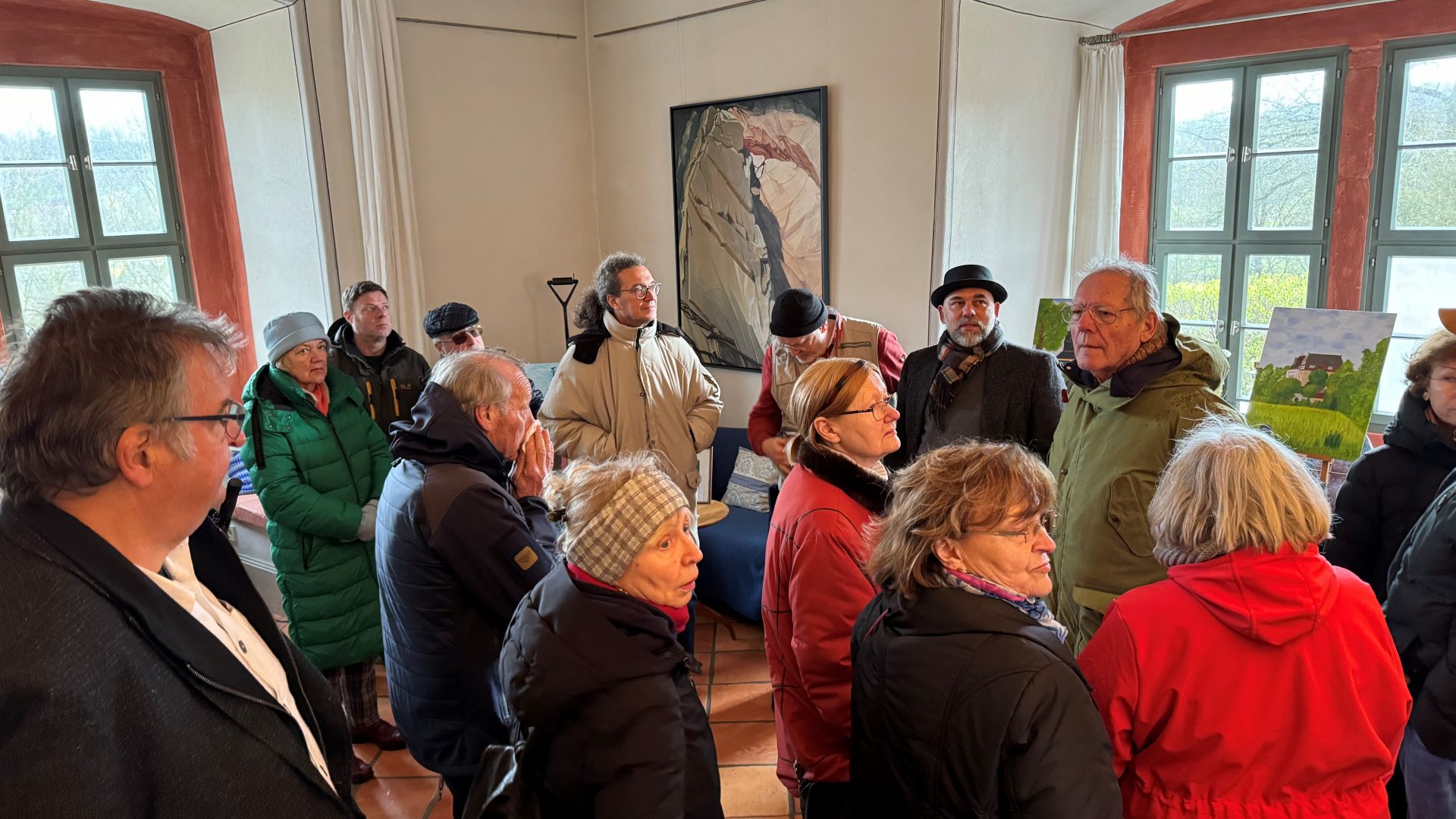Study trip to Burg-Gemünden organised by the Alsfeld History and Museum Association impressed the guestsA gem that is often overlooked
After a long break due to the coronavirus, the Alsfeld History and Museum Association recently organised and led a study trip to Burg-Gemünden. The destination of the trip was Burg-Gemünden, a small village with a great history, or more precisely, the castle complex, which towers over the village on a large flat area.
The participants were welcomed by Roland Wagner, the chairman of the ‘Fördergemeinschaft 750 Jahre Burg-Gemünden e.V.’ and immediately taken to the castle chapel, which is located in the outer bailey. Like the castle, which was first mentioned 750 years ago in 1274, the church also has a long history. The current building dates back to a new construction in 1499, and the church was given its current form in 1749 after several alterations. After the Second World War, it became a simultaneous church for the Catholic community, which consisted of refugees.
Visitors were particularly impressed by the artistic decoration of the church: medieval frescoes, which are depicted as wall hangings, adorn the interior, as does a fresco of a knight, which presumably depicts St Martin.
The baptismal angel, which is still in use, attracted particular attention. The visitors were then welcomed by Ekart Rittmannsperger, the current owner of the castle. The ‘lord of the castle’ gave a brief overview of the origins and history of the castle complex:
The castle was built in the 13th century by the Counts of Ziegenhain to protect the ford through the Ohm on the road from Grünberg via Burg-Gemünden to Kirtorf and Treysa. This was followed by a history of destruction and reconstruction. Jurisdiction also changed over the centuries and the castle was at times owned by various noble families such as the Riedesels, Waldvögeln and Dernbachs: A tithe barn was built in 1556/57, which was remodelled in Baroque style in 1756 under Ludwig VIII. The castle and barn served various purposes, for example as a forest administration centre until 1932/33. During the National Socialist era, the barn was occupied by the voluntary labour service and was later used as accommodation for refugees from the German eastern territories.
Afterwards, the participants of the study trip were able to visit the manor house, which the Rittmannsperger lords had opened on this day and made available for an art exhibition on the occasion of the 750th anniversary of Burg-Gemünden.
The motto of this exhibition is ‘Art creates memories – the most beautiful pictures of Burg-Gemünden’. Andrea Albert, member of the board of the sponsoring organisation, welcomed the group and explained how the motifs for the art exhibition were selected: during a walk through Burg-Gemünden. The pictures created by local artists were appropriately presented in this unique setting.
The unanimous opinion of the visitors at the end of the excursion was summarised by one participant as follows: ‘Burg-Gemünden and the castle grounds are a real gem. Much too good to just rush past on the motorway!’
Text: Jutta Petri, picture: Jochen Weppler
Translated with DeepL.com (free version)
